Sarah Sundin's Blog, page 436
March 25, 2013
Make It Do - Rationing of Fats & Oils in World War II
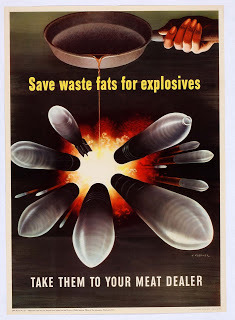 Rationing was part of life on the US Home Front during World War II. Along with gasoline, sugar, coffee, processed foods, meat, and cheese—fats and oils were rationed. To help produce the glycerin needed by the military, housewives also collected kitchen waste fats.
Rationing was part of life on the US Home Front during World War II. Along with gasoline, sugar, coffee, processed foods, meat, and cheese—fats and oils were rationed. To help produce the glycerin needed by the military, housewives also collected kitchen waste fats.Why Fats?
Shortages of butter and oils began early in the war. Most cooking oils came from Pacific lands conquered by the Japanese, and the supply plummeted. Fats were also needed in higher quantities for industrial and military use. For example, the Navy used lard to grease their guns. In addition, the United States provided the fats needed by many of our allies for military and civilian use.
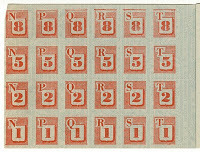
Rationing of Fats and Oils
By Christmas of 1942 a serious shortage of butter and other fats developed. The Office of Price Administration added butter, fats, and oils to rationing on March 29, 1943. Points were assigned to each type of fat based on scarcity. Grocery stores posted the required ration points along with prices. Lard was removed from rationing on March 3, 1944 and shortening and oils on April 19, 1944, but butter and margarine were rationed until November 23, 1945. Butter required a higher number of points than margarine, so “oleo” margarine became more popular. Naturally white, oleo came with a packet of yellow food coloring to mix in.
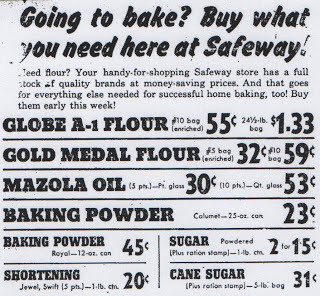
Ration Books
Ration Books Two, Three, and Four included blue stamps for processed foods and red stamps for meat, cheese, and fats. Each person received 64 red stamps each month, providing about 12 pounds of fats per year.
Glycerin Shortage
The vital substance of glycerin comes from fats. In the United States, most glycerin came from the production of soap—when fats and lye are combined, soap and glycerin are formed. Glycerin is a crucial ingredient in the manufacture of explosives such as nitroglycerin. It was also needed for other military uses—as a lubricant, in protective paint for planes and tanks, in hydraulics, in the production of cellophane for food wrappers, and in dyes for uniforms.
In addition, glycerin is vital in pharmaceuticals as a solvent, protectant, and emollient. To free up some of the supply, glycerin use was restricted or removed from civilian products such as beverages, gum, antifreeze, tobacco, cosmetics, lotions, soaps, and shampoo. Pharmacists learned to use other solvents to make suspensions and elixirs. However, more glycerin was needed, so America turned to the housewife to provide more fats.
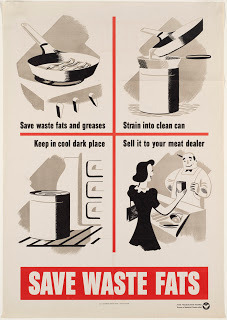
“Pass the Grease and Make the Ammunition”
“One tablespoonful of kitchen grease fires five bullets.” “One pound of kitchen fats makes enough dynamite to blow up a bridge.” Slogans like these prompted housewives to salvage cooking fats. In June of 1942, a national program was begun for collection—but it still wasn’t enough. To reward collection, starting in December of 1943, housewives received 2 red ration points and 4 cents for each pound of grease.
How were waste fats collected?
Housewives saved fats trimmed from meat (boiled down), pan juices, skimmings from stews and gravies, even water from boiling sausage (chilled and skimmed). The grease had to be free of water and juice, strained through a fine-mesh sieve to remove impurities, and stored in a cool and dry place, preferably refrigerated. When a pound had been collected in a tin can, the housewife took it in to her grocer or butcher, who would return her tin can—tin was scarce too!
How would you deal with rationed butter and oils—or saving your kitchen grease?
Published on March 25, 2013 02:00
Today in World War II History
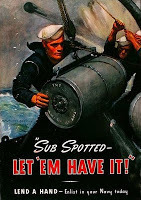 70 Years Ago—Mar. 25, 1943: Neutral Spain closes its border with Nazi-occupied France. Battle for convoy HX-231 begins; first time convoy beats off U-boats without loss.
70 Years Ago—Mar. 25, 1943: Neutral Spain closes its border with Nazi-occupied France. Battle for convoy HX-231 begins; first time convoy beats off U-boats without loss.
Published on March 25, 2013 01:00
March 24, 2013
Today in World War II History
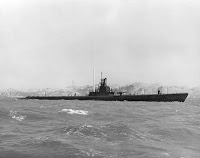 USS Wahoo, Mare Island CA70 Years Ago—Mar. 24, 1943: In the Yellow Sea near Port Arthur, US sub Wahoo sinks 3 Japanese cargo ships. First Chindit Raid ends (British/Indian raids in Japanese-occupied Burma); although one-third of men were lost, raid raised morale.
USS Wahoo, Mare Island CA70 Years Ago—Mar. 24, 1943: In the Yellow Sea near Port Arthur, US sub Wahoo sinks 3 Japanese cargo ships. First Chindit Raid ends (British/Indian raids in Japanese-occupied Burma); although one-third of men were lost, raid raised morale.
Published on March 24, 2013 01:00
March 23, 2013
Today in World War II History
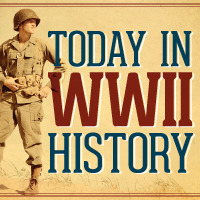 70 Years Ago—Mar. 23, 1943: In heaviest air raid to date, RAF drops 2000 tons of bombs on Dortmund, Germany. In tank battle at El Guettar in Tunisia, US infantry manages to defeat German armor.
70 Years Ago—Mar. 23, 1943: In heaviest air raid to date, RAF drops 2000 tons of bombs on Dortmund, Germany. In tank battle at El Guettar in Tunisia, US infantry manages to defeat German armor.
Published on March 23, 2013 01:00
March 22, 2013
Today in World War II History
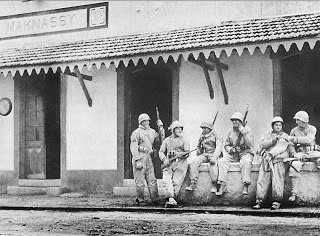 US Troops at Maknassy, Tunisia Railroad Station70 Years Ago—Mar. 22, 1943: Nazis extend work week in Netherlands to 54 hours. Patton’s forces occupy Maknassy, Tunisia.
US Troops at Maknassy, Tunisia Railroad Station70 Years Ago—Mar. 22, 1943: Nazis extend work week in Netherlands to 54 hours. Patton’s forces occupy Maknassy, Tunisia.
Published on March 22, 2013 01:00
March 21, 2013
Today in World War II History
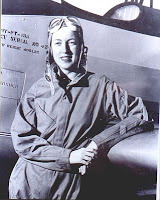 Cornelia Fort70 Years Ago—Mar. 21, 1943: Another failed assassination attempt on Hitler’s life, at Heroes Day celebration. In Tunisia, US Rangers ambush Italians near Gafsa and take 1000 POWs. Cornelia Fort becomes first WAFS (Women’s Auxiliary Ferrying Squadron, precursor of WASPs) member killed in action, ferrying BT-13 in Texas.
Cornelia Fort70 Years Ago—Mar. 21, 1943: Another failed assassination attempt on Hitler’s life, at Heroes Day celebration. In Tunisia, US Rangers ambush Italians near Gafsa and take 1000 POWs. Cornelia Fort becomes first WAFS (Women’s Auxiliary Ferrying Squadron, precursor of WASPs) member killed in action, ferrying BT-13 in Texas.
Published on March 21, 2013 01:00
March 20, 2013
Today in World War II History
 70 Years Ago—Mar. 20, 1943: In Tunisia, British launch assault on Mareth Line, and US drives for Maknassy. New song in Top Ten: “As Time Goes By.”
70 Years Ago—Mar. 20, 1943: In Tunisia, British launch assault on Mareth Line, and US drives for Maknassy. New song in Top Ten: “As Time Goes By.”
Published on March 20, 2013 01:00
March 19, 2013
Today in World War II History
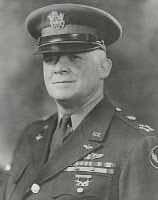 Gen. Henry H. Arnold70 Years Ago—Mar. 19, 1943: U-boats break off attacks on North Atlantic convoys HX-229 and SC-122, ending largest convoy battle of war. Henry H. Arnold promoted to four-star general, a first for the Army Air Force.
Gen. Henry H. Arnold70 Years Ago—Mar. 19, 1943: U-boats break off attacks on North Atlantic convoys HX-229 and SC-122, ending largest convoy battle of war. Henry H. Arnold promoted to four-star general, a first for the Army Air Force.
Published on March 19, 2013 01:00
March 18, 2013
Freedom from Fear
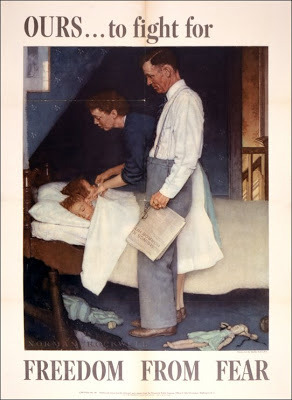 Seventy years ago, on March 13, 1943, Norman Rockwell's "Freedom from Want" appeared on the cover of The Saturday Evening Post.
Seventy years ago, on March 13, 1943, Norman Rockwell's "Freedom from Want" appeared on the cover of The Saturday Evening Post. During World War II, President Roosevelt declared Four Freedoms he felt were fundamental to humanity: freedom of speech and worship, and freedom from fear and want. Rockwell's Four Freedoms paintings were made into posters for the US Second War Loan Drive in April 1943.
Seventy years ago, the world was a fearsome place. Nazi Germany controlled most of western continental Europe and militarist Japan had conquered most of southeast Asia and the Pacific islands.
Within a few years, the governments that had caused so much fear and death were toppled. The external triggers of fear were removed - but did fear disappear?
The human mind is inclined to fear. This can benefit us as we imagine possible dangers and protect ourselves. A healthy amount of fear motivates us to do our best work on the job, to fasten our seatbelts, to vaccinate our children, to save for the future, and to brush and floss.
But fear has a tendency to worm inside, make itself at home, and spread its poison. Fear of ridicule can keep us from doing the right thing. Fear of failure - or success - can paralyze us at work. Fear of being hurt can impede true friendship and love. Fear of whatever threat is popular on the internet this week can disrupt our lives.
This is no way to live. The most common command in the Bible is "Do not fear!" God wants us to trust Him completely, and fear is a lack of trust. 2 Timothy 1:7 says, "God did not give us a spirit of timidity, but a spirit of power, of love and of self-discipline." We should let His perfect love drive out fear (1 John 4:18) and live in the freedom God desires for us.
How does the Lord help you find true freedom from fear?
Published on March 18, 2013 02:00
Today in World War II History
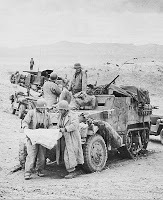 US Armor near El Guettar, Tunisia70 Years Ago—Mar. 18, 1943: US II Corps takes El Guettar, Tunisia. After successful US Eighth Air Force mission to Vegesack, Germany, experiment with daylight bombing is declared a success.
US Armor near El Guettar, Tunisia70 Years Ago—Mar. 18, 1943: US II Corps takes El Guettar, Tunisia. After successful US Eighth Air Force mission to Vegesack, Germany, experiment with daylight bombing is declared a success.
Published on March 18, 2013 01:00



